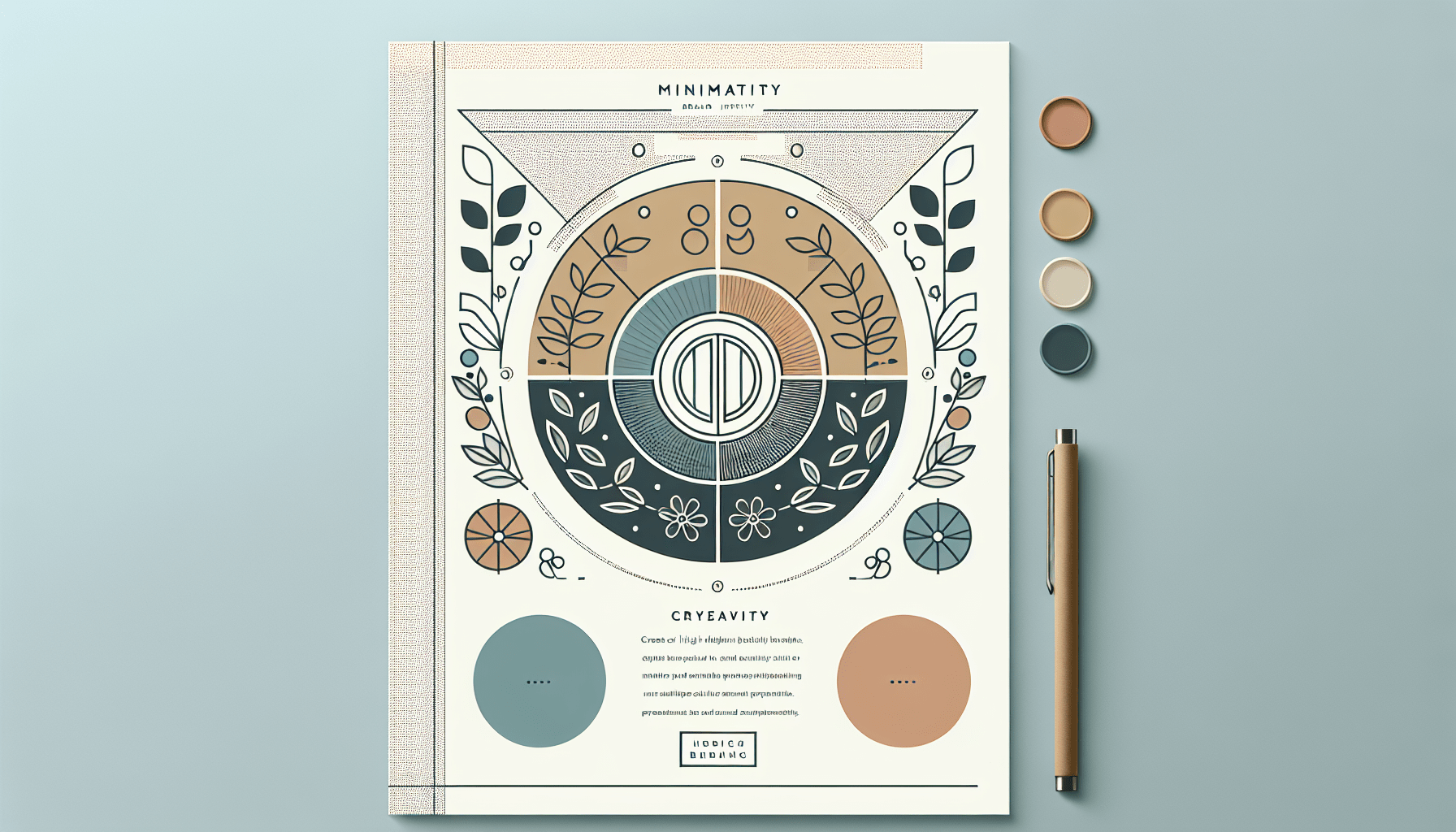Creating a brand identity can feel like trying to assemble IKEA furniture without the instructions—daunting and downright confusing. It’s common to wonder where to start or how to make your brand stand out in a crowded market. You’re not alone in feeling overwhelmed by all the options and ideas floating around!
But don’t worry! If you stick with me, I promise you’ll walk away with a clear roadmap to build a unique brand identity that resonates with your audience. You’ll learn all the essential steps that can transform your ideas into a vibrant and recognizable presence.
From understanding your market to developing a unique visual identity, we’ll cover everything you need to establish a strong brand. Let’s dive in and unpack these steps together, shall we?
Key Takeaways
Stefan’s Audio Takeaway
- Understand your market through research to identify trends and opportunities.
- Pinpoint your target audience by creating detailed customer personas.
- Define your brand’s personality and core values to create emotional connections.
- Develop a unique visual identity with a logo, color palette, and typography that resonates.
- Establish a consistent brand voice and tone that aligns with your personality.
- Apply your brand identity consistently across all marketing channels.
- Monitor and adjust your brand identity based on feedback and market trends.
- Reflect your brand identity accurately on the platforms where your audience engages.

Step 1: Understand Your Market to Create a Brand Identity
Before you dive into branding, it’s crucial to get a solid grip on your market. Understanding the landscape helps you see where your business fits in and where opportunities lie. Start by conducting thorough market research, focusing on industry trends, customer behaviors, and even your competitors. This can involve surveys, social media monitoring, and analyzing market reports.
For example, if you notice a growing trend in sustainable products, this could inform your brand identity. Tailoring your approach to resonate with these trends can give you an edge. So, keep an eye on what’s hot and determine how you can leverage that information in your branding efforts.
Step 2: Identify Your Target Audience
Once you understand your market, the next step is pinpointing your target audience. Who are they? What are their needs? Start by creating customer personas—these are fictional characters that represent your ideal customers. Include demographics, interests, pain points, and buying behaviors.
Utilize platforms like Google Analytics to gauge who is already visiting your site. This data can offer insights into what your audience finds appealing. Moreover, don’t hesitate to reach out for direct feedback through polls or interviews. The more you understand your audience, the better you can tailor your brand identity to meet their expectations and preferences.
Step 3: Define Your Brand Personality and Core Values
Your brand’s personality is like a flavor that makes it unique. Is it fun and quirky or serious and professional? Defining this helps guide your messaging and visuals. Think about your brand as a character—what traits would it embody? This could range from adventurous to trustworthy.
On top of personality, core values are equally vital. These are the guiding principles that dictate how you operate. For instance, if sustainability is a core value, this should reflect in every aspect of your business from sourcing materials to customer engagement. By clearly articulating both personality and values, you create a cohesive identity that your audience can connect with on a deeper level.

Step 4: Develop a Unique Visual Identity
Your visual identity is more than just a logo; it’s how your brand presents itself to the world.
Start by creating a logo that resonates with your brand personality and is visually appealing.
Choose a color palette that reflects your brand values; colors evoke emotions, so consider what feelings you want to inspire.
Typography is also key—select fonts that match your brand voice. Whether you’re bold and modern or classic and elegant, your type choices should complement your overall style.
Lastly, ensure consistency across all visual elements, from your website to social media profiles, to reinforce brand recognition.
Step 5: Establish a Consistent Brand Voice and Tone
Your brand voice is how you communicate with your audience; it should mirror your brand personality.
Are you friendly and conversational, or more formal and authoritative? Define this clearly.
Once you’ve established a voice, maintain consistency across all platforms, whether in social media posts or customer emails.
Real-time data can help you refine your communication. For instance, adjusting your tone based on audience engagement can enhance connection.
Real-time analytics show nearly 70% of companies use customer-centered decisions, indicating a shift towards more personalized engagement.
Step 6: Apply Your Brand Identity Across All Channels
It’s essential to implement your brand identity consistently across every channel.
This includes your website, social media profiles, email campaigns, and even physical marketing materials.
If your visual identity is cohesive, it builds familiarity and trust among customers.
Leverage real-time data to analyze how different channels perform and adjust your strategies accordingly.
For instance, track user engagement metrics to see where your branding shines or where it might need a boost.
Step 7: Monitor and Adjust Your Brand Identity
Creating a brand identity is not a one-time job; it requires ongoing monitoring and adjustments.
Use tools for reputation management to keep an eye on how your brand is perceived online.
Real-time data can help identify areas needing improvement; 60% of business leaders claim real-time analytics have significantly impacted customer retention.
Be ready to tweak your messaging based on customer feedback and market trends to stay relevant.
A responsive brand fosters customer loyalty and enhances overall experience.
Step 8: Reflect Your Brand Identity on Key Platforms
Identify where your audience spends most of their time—social media, blogs, or forums.
Tailor your brand identity to resonate with each platform while maintaining a unified presence.
For example, on platforms like Instagram, visuals are key, while LinkedIn may require a more professional tone.
Real-time data can sharpen your strategy by showing you which platforms are driving engagement and conversions.
Only 7% of marketers can implement real-time marketing, giving you a competitive edge if you leverage this effectively.
Conclusion: Importance of Consistency in Your Brand Identity
In today’s fast-paced market, consistency is more than just a buzzword—it’s a necessity.
Your audience should recognize your brand instantly, no matter where they encounter it.
Utilizing real-time data analytics can help maintain that consistency across all touchpoints.
When customers see a cohesive brand identity, it builds trust and encourages loyalty.
So, remember that your brand identity isn’t static; it should evolve as you gather insights from your audience and market trends.
FAQs
Brand identity encompasses the visual elements, messaging, and overall perception of a brand. It’s crucial for differentiation in the market, fostering customer loyalty, and conveying a brand’s values and mission effectively.
Identifying your target audience involves researching demographics, interests, and purchasing behaviors. Utilize surveys, social media insights, and market research data to define and understand who your ideal customers are.
A unique visual identity includes logo design, color palette, typography, and imagery style. These elements should align with your brand values and resonate with your target audience, ensuring a cohesive and memorable brand presence.
Monitoring and adjusting your brand identity should be an ongoing process. Regularly analyze market trends, customer feedback, and competitor activity to ensure your brand remains relevant and aligned with audience expectations.
